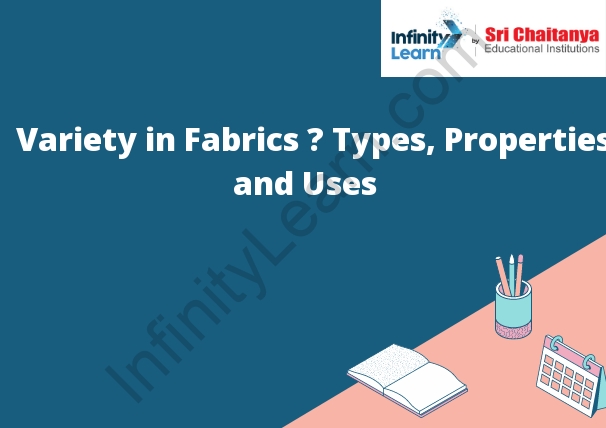Table of Contents
Different Types of Fibers and Their Uses;
There are many types of fibers that are used in a variety of ways. Some fibers are used in textiles and clothing, while others are used in construction or insulation. Variety in Fabrics – Types Properties and Uses.
Some of the most common types of fibers used in textiles and clothing include cotton, wool, silk, and synthetic fibers such as polyester and nylon. Cotton is a natural fiber that is grown in warm climates. Wool is a natural fiber that is made from the hair of sheep. Silk is a natural fiber that is made from the cocoons of silkworms. Polyester and nylon are synthetic fibers that are made from petrochemicals.
Fibers are also used in construction and insulation. Some common types of fibers used in construction include fiberglass, rockwool, and cellulose. Fiberglass is a synthetic fiber made from glass fibers. Rockwool is a mineral fiber made from rock. Cellulose is a natural fiber made from plant materials.
Fibers are also used in insulation. Some common types of insulation fibers include fiberglass, rockwool, and cellulose. Fiberglass is a synthetic fiber made from glass fibers. Rockwool is a mineral fiber made from rock. Cellulose is a natural fiber made from plant materials.

Types of Fiber
There are two types of fiber: soluble and insoluble.
Soluble fiber dissolves in water and forms a gel-like material. It can help lower cholesterol and blood sugar levels. Sources of soluble fiber include oats, barley, legumes, nuts, and seeds.
Insoluble fiber does not dissolve in water. It helps keep things moving through the digestive system and can reduce the risk of constipation. Sources of insoluble fiber include whole wheat flour, wheat bran, vegetables, and fruits.
Different Types of Fiber
There are two types of fiber: soluble and insoluble.
Soluble fiber dissolves in water and forms a thick gel-like substance. This type of fiber is found in foods like oats, barley, legumes, and fruits. Soluble fiber helps to regulate blood sugar levels, lowers cholesterol levels, and helps to keep us feeling full after eating.
Insoluble fiber does not dissolve in water and forms a bulky, fibrous substance. This type of fiber is found in foods like whole grains, wheat bran, vegetables, and fruits. Insoluble fiber helps to regulate bowel movements, prevents constipation, and helps to keep us feeling full after eating.
Properties of Fiber
-Fiber is a type of carbohydrate that the body cannot digest.
-It is found in plant foods like fruits, vegetables, and whole grains.
-Fiber helps keep you regular by increasing the bulk of your stool and promoting regular bowel movements.
-Fiber also helps keep you feeling full after eating, which can help with weight control.
-There are two types of fiber: soluble and insoluble.
-Soluble fiber dissolves in water and forms a gel-like substance. This type of fiber can help lower blood cholesterol and blood sugar levels.
-Insoluble fiber does not dissolve in water and helps move food through your digestive system. This type of fiber can help prevent constipation.
Different Types of Fibers and Their Uses
There are a few different types of fibers that are commonly used in textiles. The most common are natural fibers, which come from plants or animals. These include cotton, wool, silk, and linen. They are all relatively strong and absorbent, which makes them good for clothing. Synthetic fibers are made from chemicals, and are usually not as strong as natural fibers. However, they are more resistant to wear and tear, and can be produced in a variety of colors and textures. Some of the most common synthetic fibers are polyester, nylon, and acrylic.
Variety in Fabrics – Types Properties and Uses.







